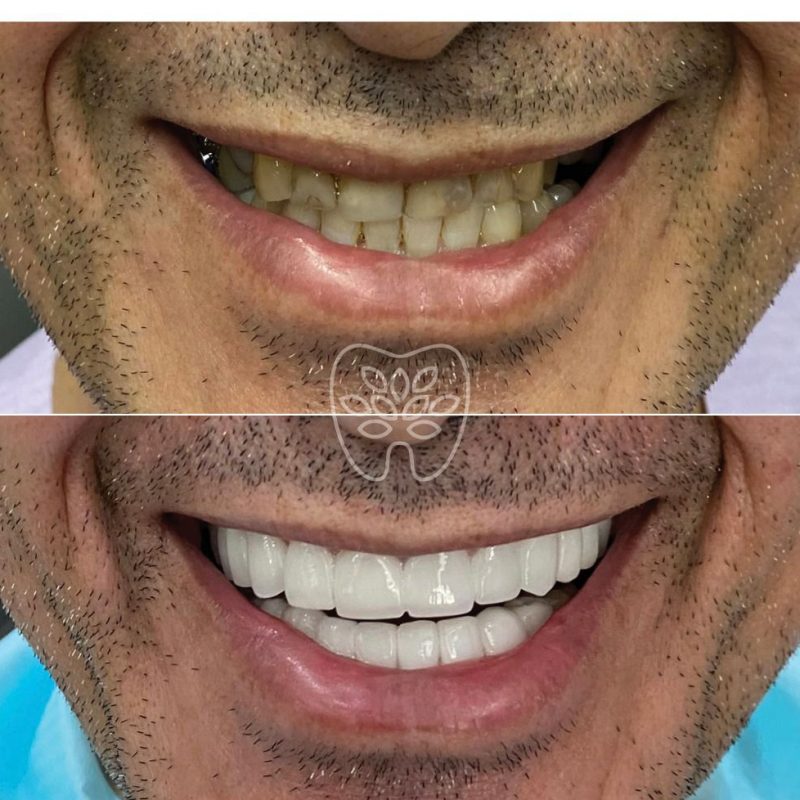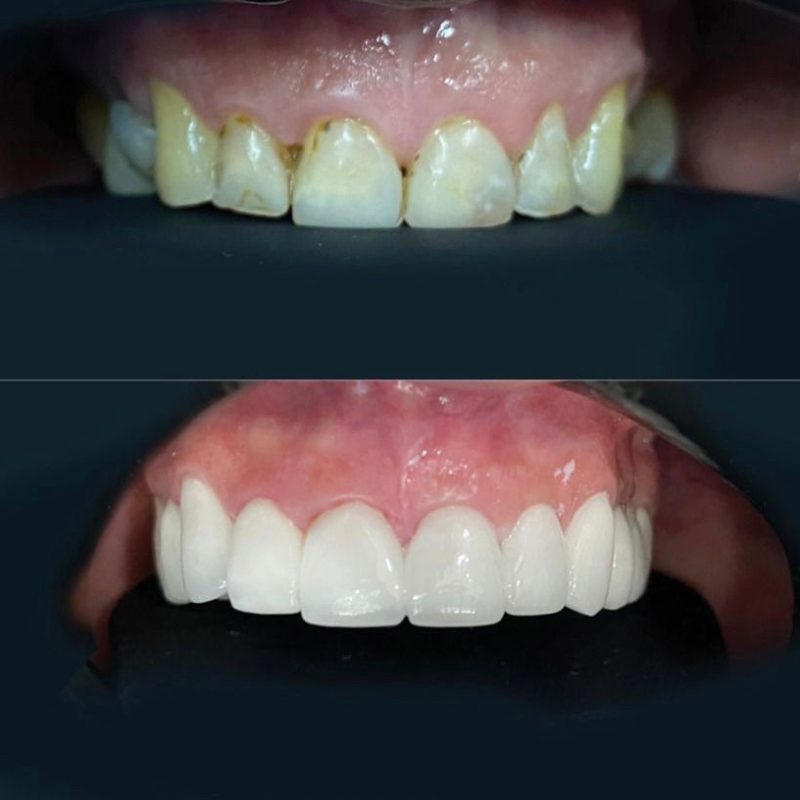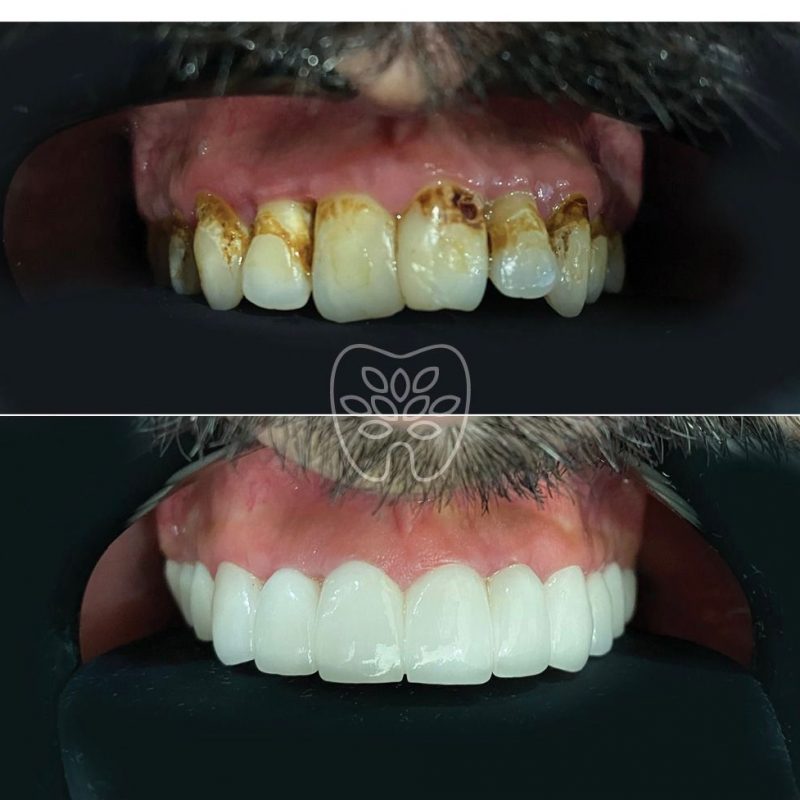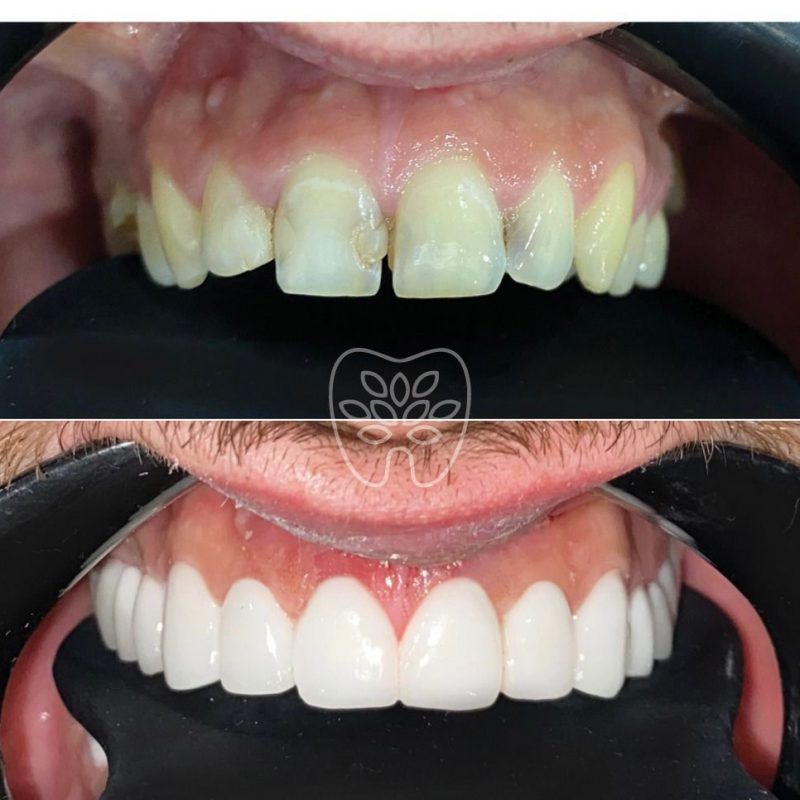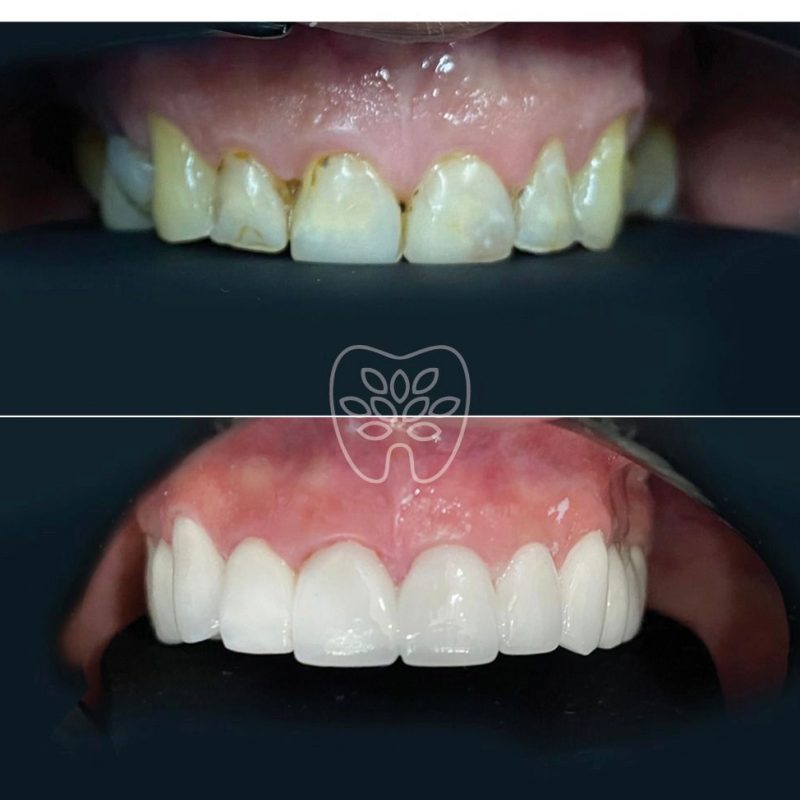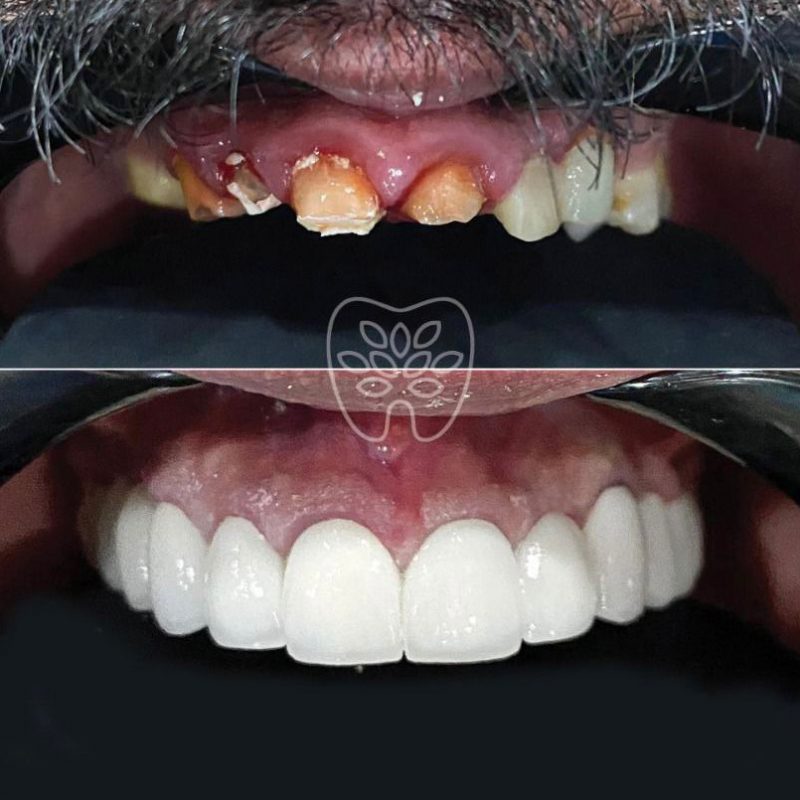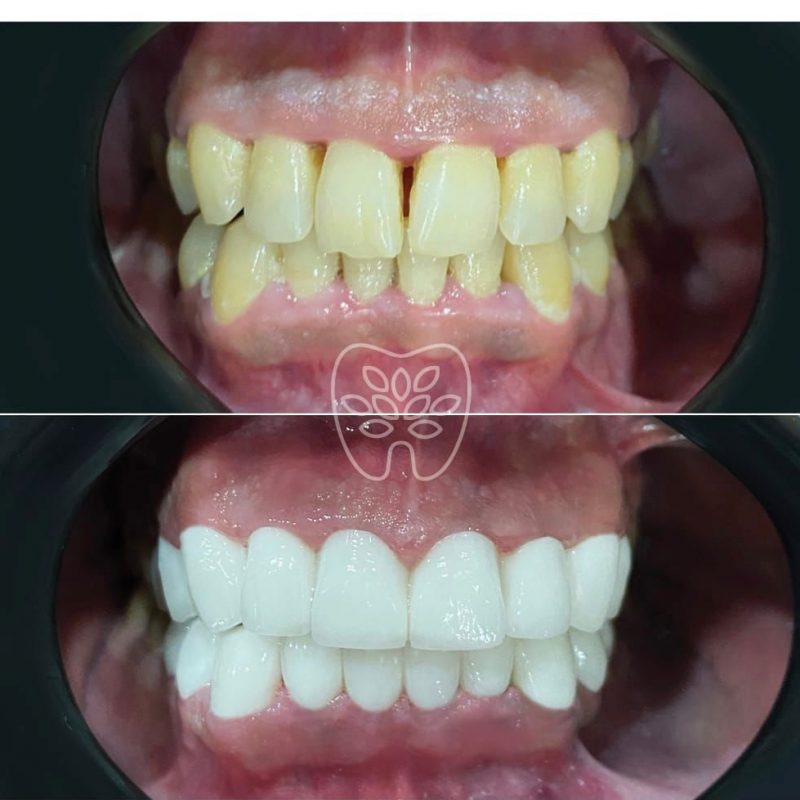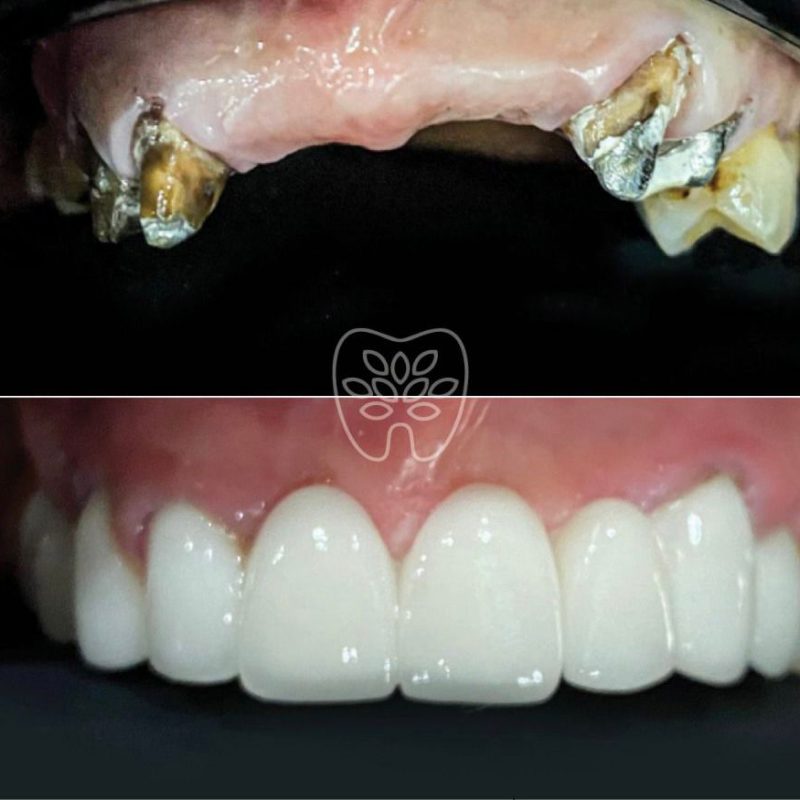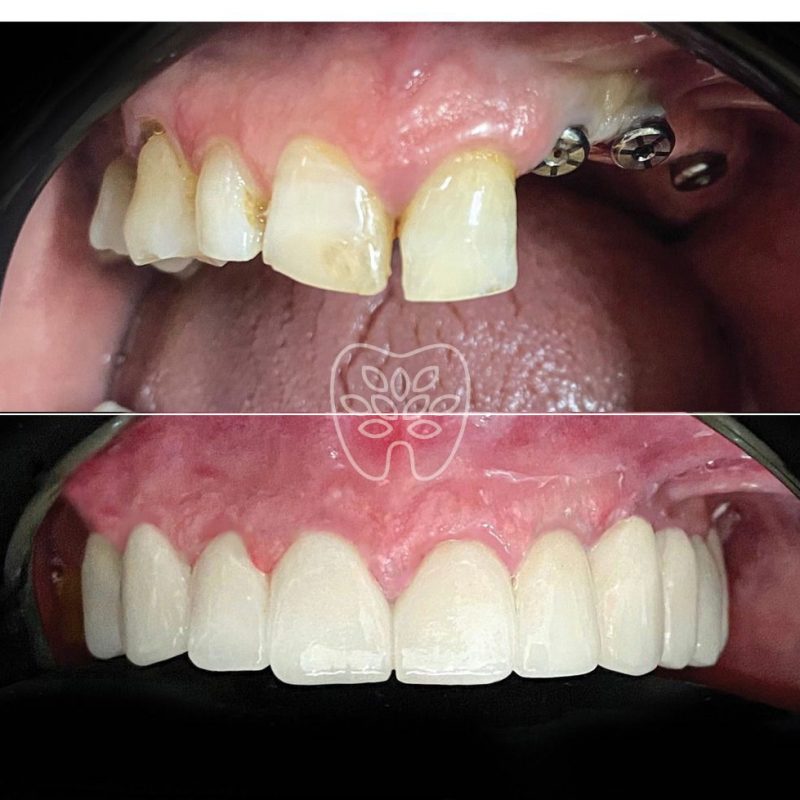Dental Implants
The Straumann® dental implant system
– Zirconia veneer
Proven, simple and flexible top quality zirconia ceramic dental veneer
A dental implant is a titanium screw placed in the jawbone to replace the root of a missing natural tooth.

After about 3 months it is integrated by the bone and will serve as a support for a crown, a bridge, a clipped prosthesis.
It is made of titanium (zirconia is very rare and very expensive). The abutment, part between the implant and the prosthesis, is made of titanium, there is also zirconia but the cost of treatment is 2 to 3 times more expensive with this material.
In your journey of researching information on implant systems offered in clinics and care, it is almost certain that you will find a lot of positive information about the brands mentioned above.
Success rate and guarantee in implantology
The rate of integration of implants depends among other things on the quantity and quality of bone existing at the time of implantation. It varies on average between 95 and 97%. At the Academic clinic, the success rate for implantology care is over 99.00%.
Your Hungary implant guaranteed for 5 years on the treatment.
The prosthesis on implant is also guaranteed, the number of years of guarantee varies according to the type of tooth prosthesis.
Note that our guarantee is made on the care and the implant itself, not only on the implant which has 1000 times less risk of having a problem.
You should also know that …
1) The care of foreign patients requires taking the minimum of risks.
Even less when you come from France than if it was a local patient who could easily return to the office for dental care.
2) Oral hygiene must be perfect to avoid inflammation.
Many patients have to make a significant effort at this level.
3) Smoking increases the rate of failure in the short, medium and long term of surgery on the jaw or teeth. Smoking patients are common.
These 3 points already determine the methods to be followed to obtain the lowest failure rate during treatment, with a minimum of clinic stays, and while controlling the budget.
In some very unfavorable cases (very strong bone resorption, heavy smoker patient, periodontitis …), implant placement is not recommended because it is too risky.
Methods for implant placement Hungary
By browsing the internet you will discover information that does not all go in the same direction. It is confusing for the patient, we know it, for that the dentists explain to you the different methods of care, those they prefer to implement in the clinic, and why.
In 2 surgical steps
The gum is sutured over the dental implant (it is therefore invisible in the mouth) and 3 months later the dentist makes a small incision to release the implant and place a so-called “healing” screw in its upper part. The gum tissue will heal around this screw to form the site that will receive the abutment and the crown during subsequent care.
This is the method most often practiced at the iDH clinic because it is the safest way to avoid inflammation around the implant (peri-implantitis). It is also the one that provides the best long-term aesthetic result by optimizing the adaptation of the gum tissue with the abutment and the crown.
In 1 Chırurgıcal Step
The gum heals around the small screw that closes the upper part of the dental implant, and 3 months later the dentist will fix the abutment and the dental prosthesis in the clinic.
Our dentists prefer the 2-step treatment method for the reasons explained above.
Without opening the gencıve
In favorable cases, ie if the bone is sufficient in quantity and quality, it is possible to pose without opening the gum and without stitches. The care method involves removing a small circular piece of gum tissue, preparing the implant site with a drill, and then screwing in.
Our dentists rarely practice this method in the clinic, the success of which in the short, medium and long term is less than that in 2 surgical stages.
Extraction – Implantation
In some cases it is possible to extract one or more teeth and implant immediately afterwards in the clinic. This avoids waiting 3 to 4 months for healing after the extraction.
The tooth to be extracted must not present any infection, the gum must be healthy, the bone situation favorable in quantity and quality. Other factors can also be taken into account before starting treatment, such as the situation of adjacent and opposing teeth. An analysis that is both precise and comprehensive including 3-dimensional radiological examination with a cone beam and a chairside examination to make the correct clinical diagnosis.
Immediate loading
In the favorable case, the patient can receive a fixed provisional prosthesis a few hours or days after fitting, this is the case with the All-on-4 and All-on-6 method.
This immediate loading technique is rarely performed in our clinic, among other reasons:
– Applicable mainly to remake a complete jaw (not for 1 or 2 implants)
– The fixed provisional prosthesis costs more than a removable prosthesis, at the end of the treatment it is no longer used. Regardless of the price, it is best to invest in what is definitive, such as a better brand or prosthetic material.
Even with these detailed explanations, it may be that gray areas persist in your mind, do not hesitate to call us to discuss them in French in person.
Zirconia is used in dentistry for dental crowns and bridges, on implants and on natural teeth. In addition to its qualities for the aesthetic result, this material is better tolerated by the gum and resistant.
Difference between zirconia crown / Ceramic-metal crown
The zirconia crown consists of a zirconia frame manufactured using the Computer Aided Design and Manufacturing technique (CAD / CAM or CAD-CAM in English).
The ceramic-metal crown is made up of a metal frame manufactured using the casting technique (molten metal poured into a mold).
Want to know more? Consult the page of our site dedicated to the ceramic-metal crown.
For both types, the framework is then covered by the prosthetist with several layers of ceramic in order to give the natural shape and color of the tooth.

 +90 541 549 5222
+90 541 549 5222